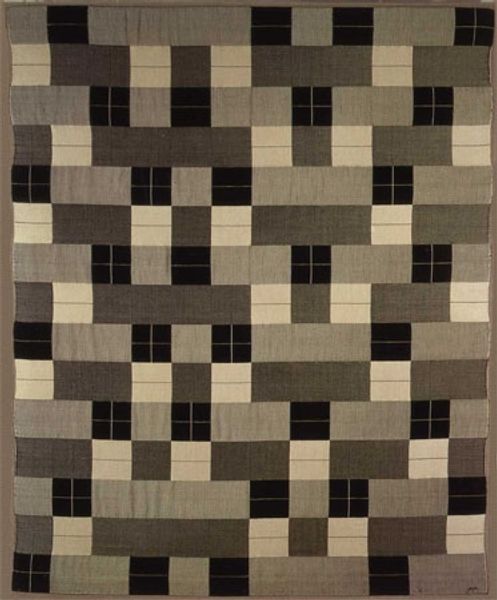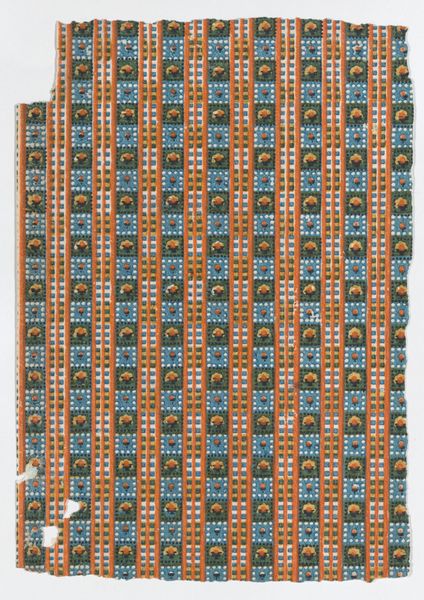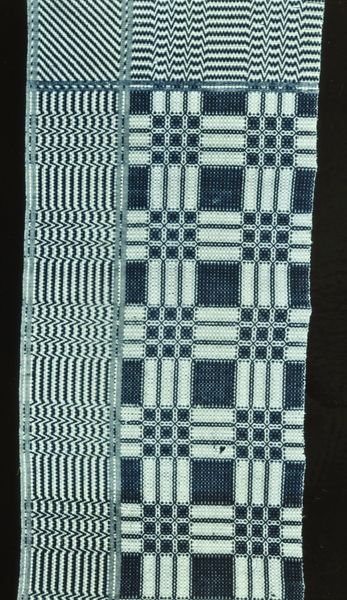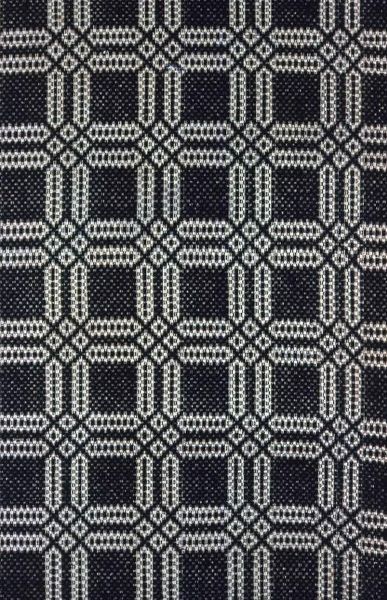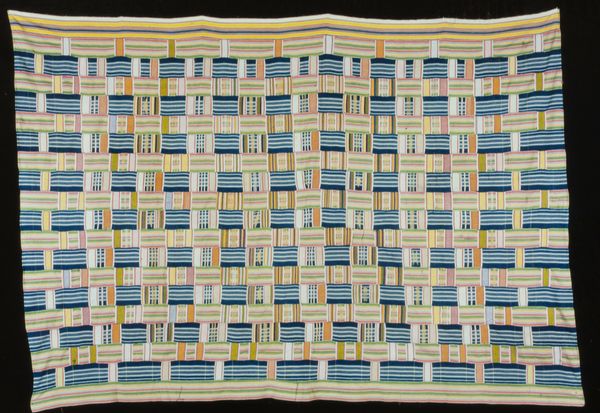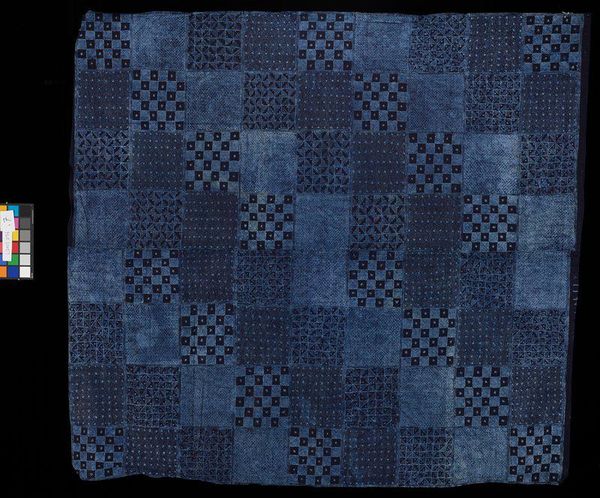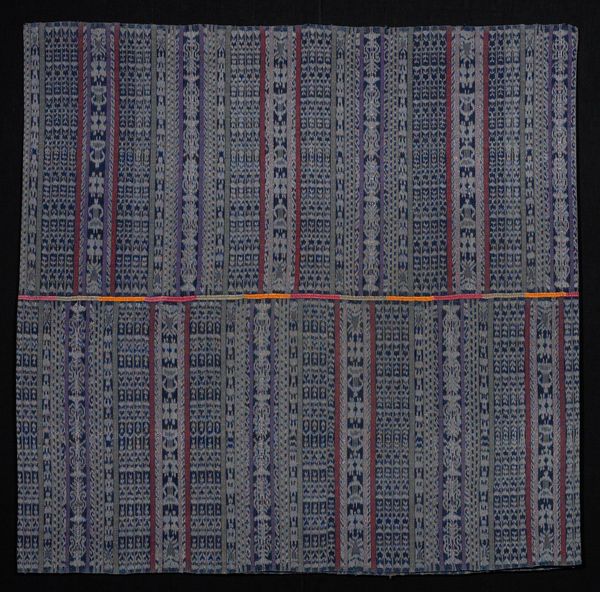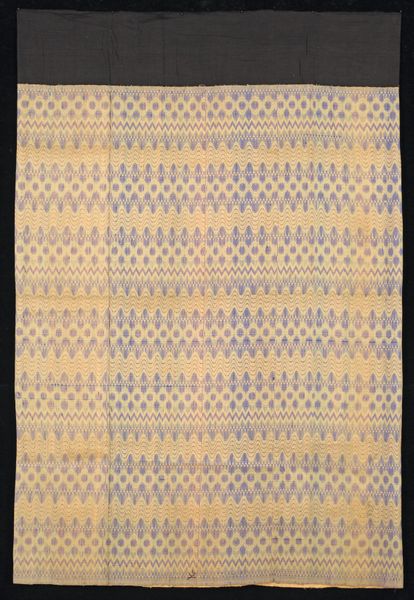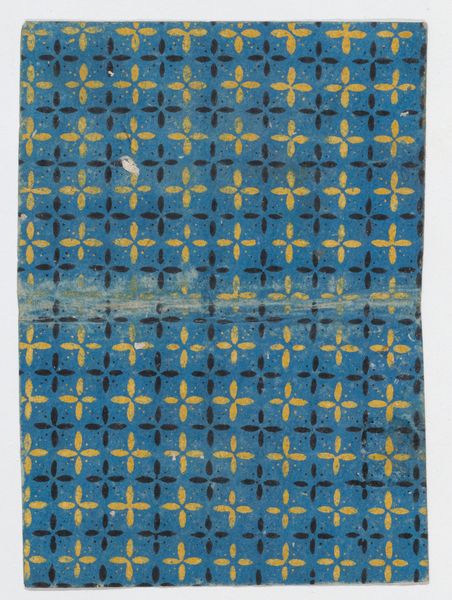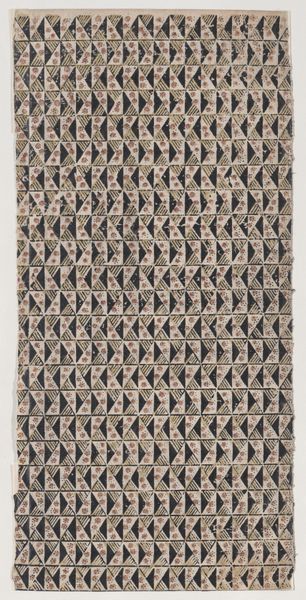
fibre-art, weaving, textile
#
pattern heavy
#
fibre-art
#
random pattern
#
pattern
#
pattern
#
weaving
#
textile
#
text
#
subtle pattern
#
abstract pattern
#
geometric
#
black-mountain-college
#
repetition of pattern
#
regular pattern
#
pattern repetition
#
layered pattern
#
bauhaus
#
combined pattern
#
modernism
Copyright: Anni Albers,Fair Use
Editor: So, this textile work is called "Thickly Settled," made by Anni Albers in 1957. It appears to be made of woven fibers. It's really quite intriguing; the repetitive geometric patterns create this layered effect. How do you interpret this work? Curator: I see Albers here engaging deeply with the inherent qualities of her materials. Consider the laborious process of weaving – each thread meticulously placed. This isn’t just decoration; it’s a testament to the value of handcraft and the skill involved in its making, in opposition to mass-produced textiles. How do the variations in the pattern affect your understanding? Editor: Well, the small changes within each grid make it seem less rigid, more organic, perhaps reflecting human imperfection versus machine precision. But how does that fit into the broader context of art at that time? Curator: Think about the Bauhaus movement, where Albers trained. They aimed to dismantle the hierarchy between art and craft, recognizing the aesthetic and intellectual potential of functional objects. Albers challenges the very definition of "high art" by elevating textile work, a medium traditionally associated with domesticity and women's labor. Editor: So, by emphasizing the material and process, Albers makes a statement about labor and value within art? Curator: Precisely. The dense, “thickly settled” patterns draw attention to the act of weaving itself, its rhythm and texture. She's not just creating a pretty picture; she's prompting us to reconsider our preconceived notions about what constitutes art and who gets to make it. How has your perspective changed now? Editor: I initially saw a neat pattern, but now I appreciate the significance of the materials and the cultural statement it embodies, challenging art's definition through its labor and materiality. Curator: It’s fascinating to witness how close observation of materials and methods can reveal complex layers of meaning.
Comments
No comments
Be the first to comment and join the conversation on the ultimate creative platform.
